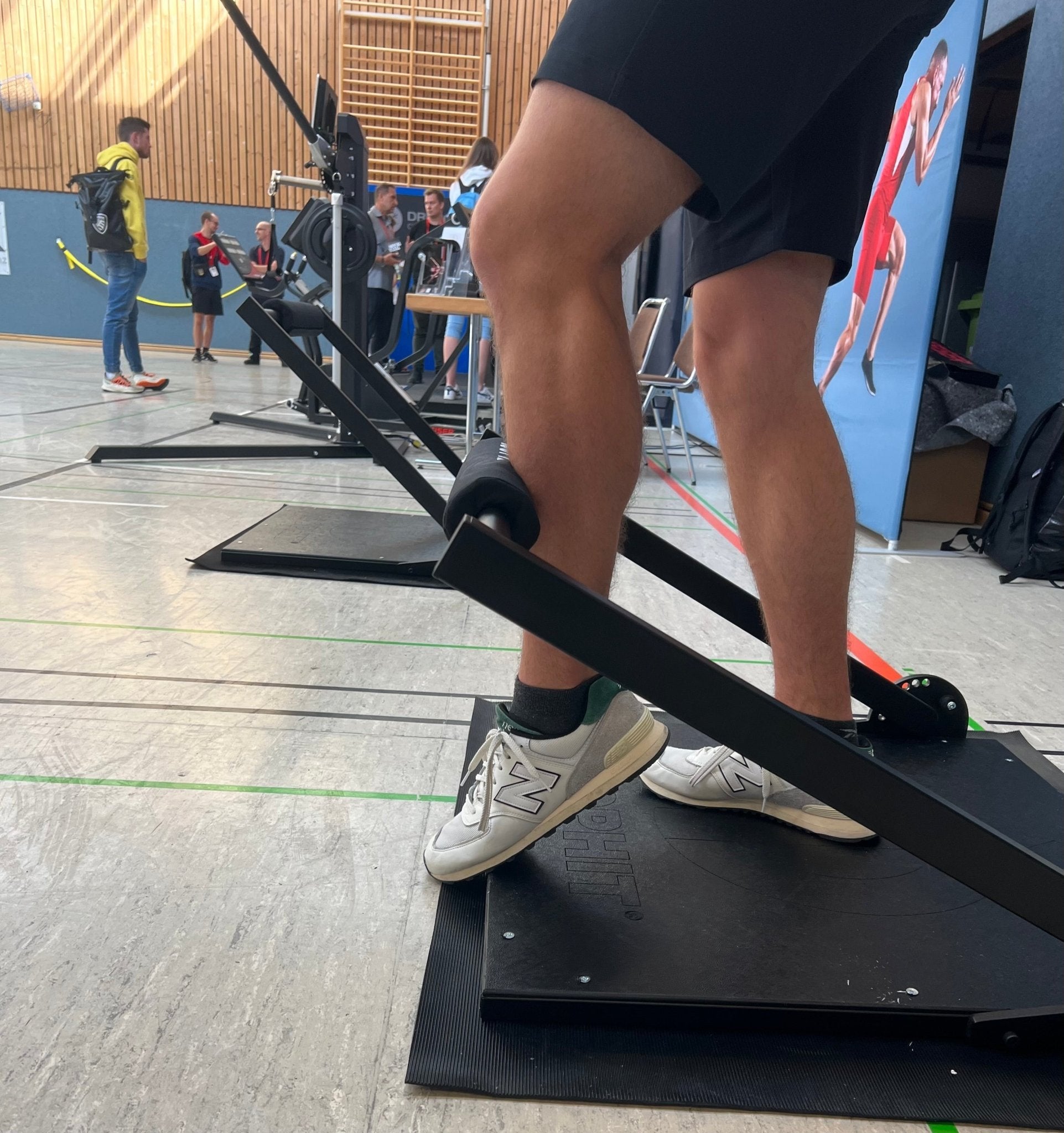Here’s one of the main reasons why you feel a sense of lightness after you use Isophit.
Oskar Kohnstamm, the brilliant mind behind the discovery of the Kohnstamm phenomenon, has left an indelible mark on the field of neuroscience and movement research. His curiosity and meticulous observations have paved the way for countless investigations into the fascinating interplay between voluntary and involuntary movements.
Kohnstamm's original description of the Kohnstamm phenomenon in 1915 opened doors to a world of exploration. He observed that by pushing the arm against a fixed surface for approximately 30 seconds and then releasing, an involuntary movement of the arm occurred, accompanied by a distinct feeling of lightness. This seemingly simple observation ignited a scientific journey that continues to unravel the mysteries of our neuromotor processes.
Since Kohnstamm's pioneering work, researchers have delved into the phenomenon, proposing various theories to explain its mechanisms. Central, peripheral, and hybrid theories have been put forth, each contributing to our understanding of how our brain and body interact during voluntary and involuntary movements.
The Kohnstamm phenomenon has provided an essential scientific method for comparing and contrasting these types of movements. It offers a unique opportunity to explore the subjective experiences associated with involuntary movements and investigate the possibility of exerting voluntary control over them.
Furthermore, the Kohnstamm phenomenon has shed light on the complexities of our motor hierarchy and the role of afferent signals. Researchers have discovered that a central adaptation interacts with these signals, influencing the generation of involuntary movements. The absence of an efference copy, which typically cancels out sensory inflow during voluntary movements, contributes to the sensation of involuntary movement and lightness experienced during the Kohnstamm phenomenon.
Kohnstamm's observations have transcended the boundaries of a single muscle or body part. While initially studied in the deltoid muscle, researchers have since identified the phenomenon in various muscles, including those in the arm, wrist, ankle, knee, hip, and neck. The universality of this phenomenon highlights its relevance and broad applicability within the realm of movement research.
Today, the Kohnstamm phenomenon continues to captivate scientists and push the boundaries of our understanding. Researchers strive to uncover the specific afferent signals involved, locate the Kohnstamm generator, and elucidate the intricate feedback control mechanisms that underlie the aftercontraction.
With Isophit we are easily able to harness the benefits of the Kohnstamm phenomenon. In our 30inThirty isometric strength training program we mimic the initial induction force observed in the Kohnstamm phenomenon. This provides an opportunity to experience the unique feeling of lightness and involuntary muscle activation.
Oskar Kohnstamm's pioneering work and his observation of the Kohnstamm phenomenon have left an enduring legacy in the scientific community. His contributions have fueled ongoing research, inspiring scientists to explore the boundaries of human movement and unlock its mysteries. As you integrate Isophit into your fitness journeys, embrace the spirit of Kohnstamm's discoveries, pushing yourself to new heights and unlocking the full potential of our neuromuscular processes.
So, the next time you find yourself pushing or pulling against a surface, experiencing that distinctive feeling of lightness, remember the curious mind of Oskar Kohnstamm and the possibilities he uncovered. With Isophit, we embark on a fitness adventure that intertwines the legacy of scientific discovery with the pursuit of improved functional health and performance.
If you have any questions regarding the article or would like to learn more about Isophit and its benefits for improving functional health and performance, please feel free to email me at brad@isophit.com.
Yours in Isometric Strength,
Brad Thorpe
CEO / Inventor
Isophit





![5. 30inThirty™ Strength Series - [15 Printable Programs] - Isophit](http://www.isophit.com/cdn/shop/files/5-30inthirty-strength-series-15-printable-programs-433761.png?v=1728497641&width=1080)




Share:
Isophit: Motor Cross King
Isophit: Depression and Anxiety Linked to Poor Isometric Muscle Strength and Asymmetry.